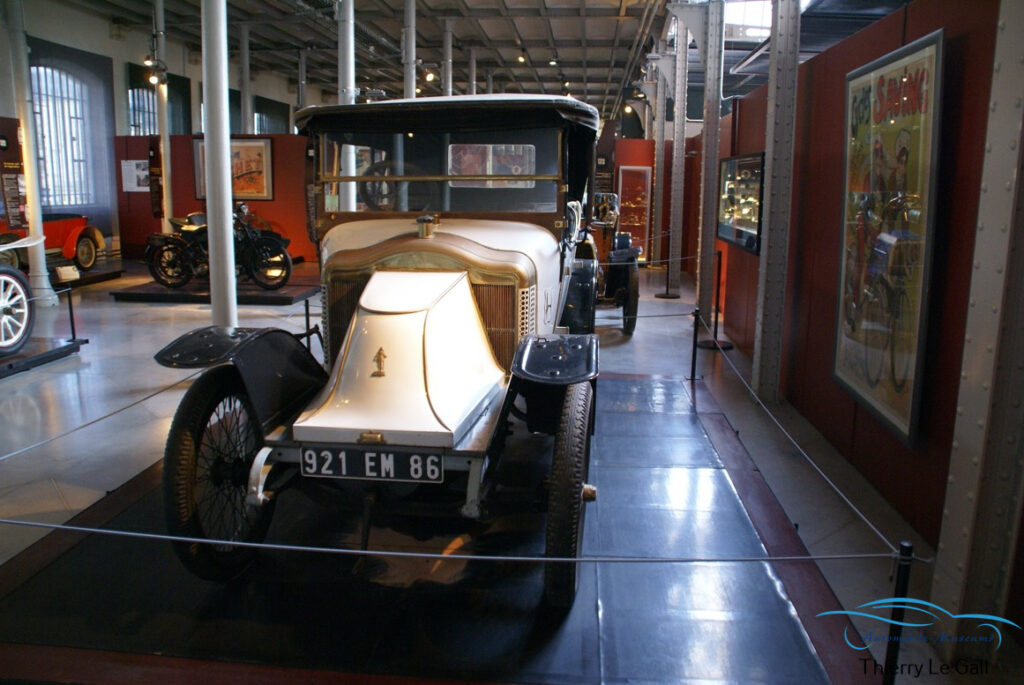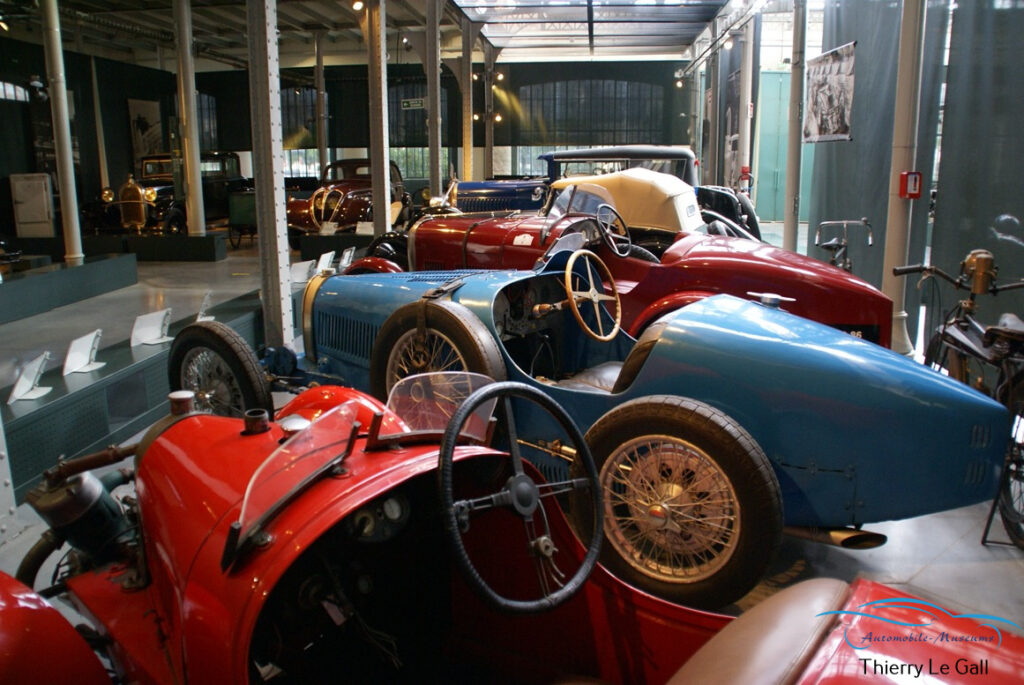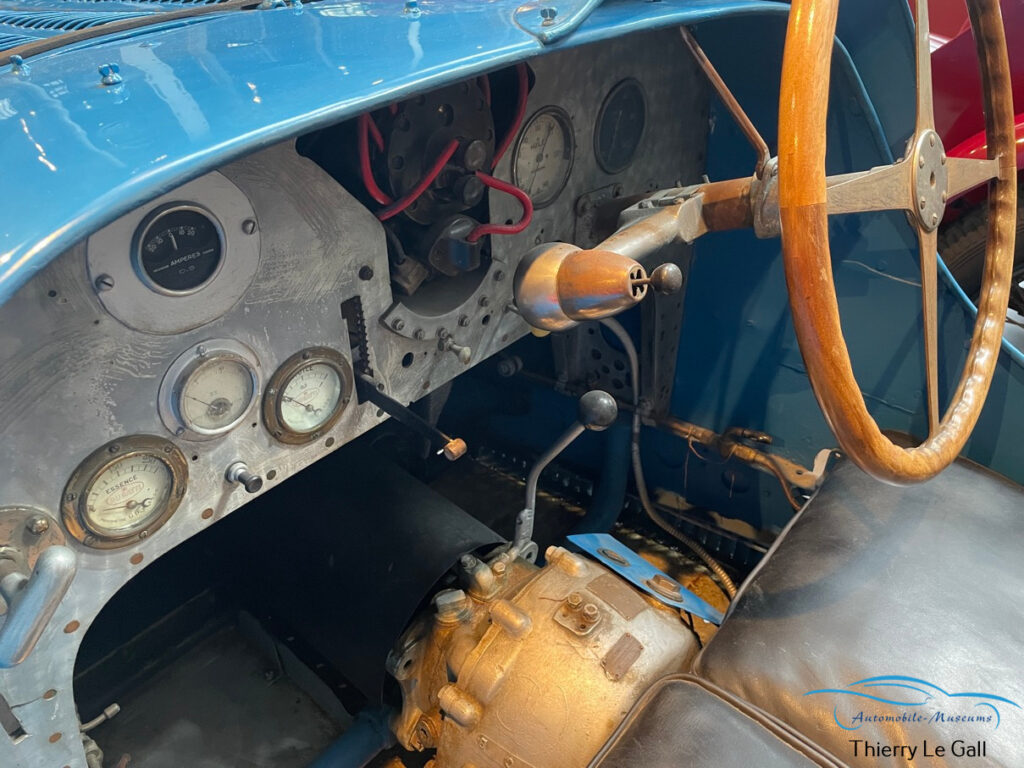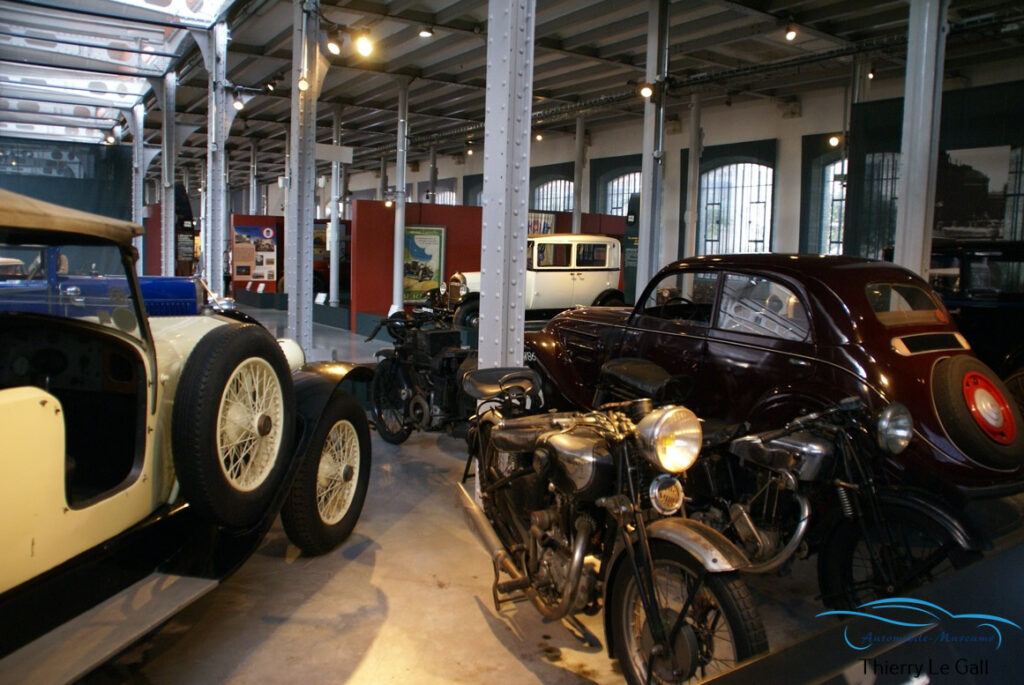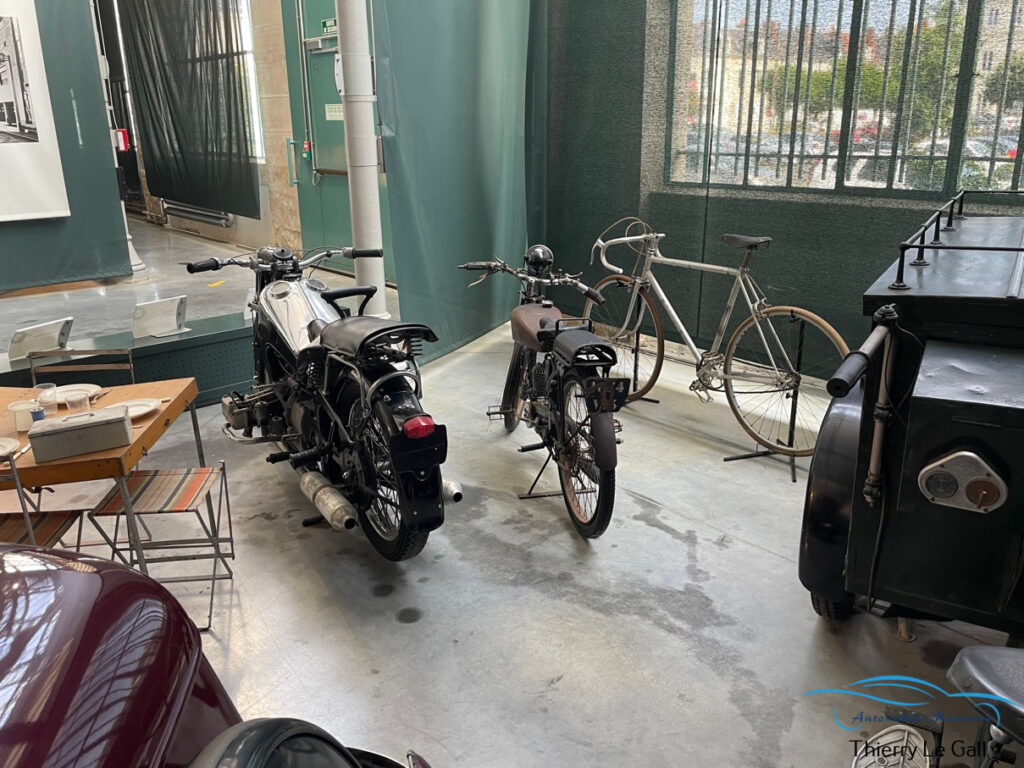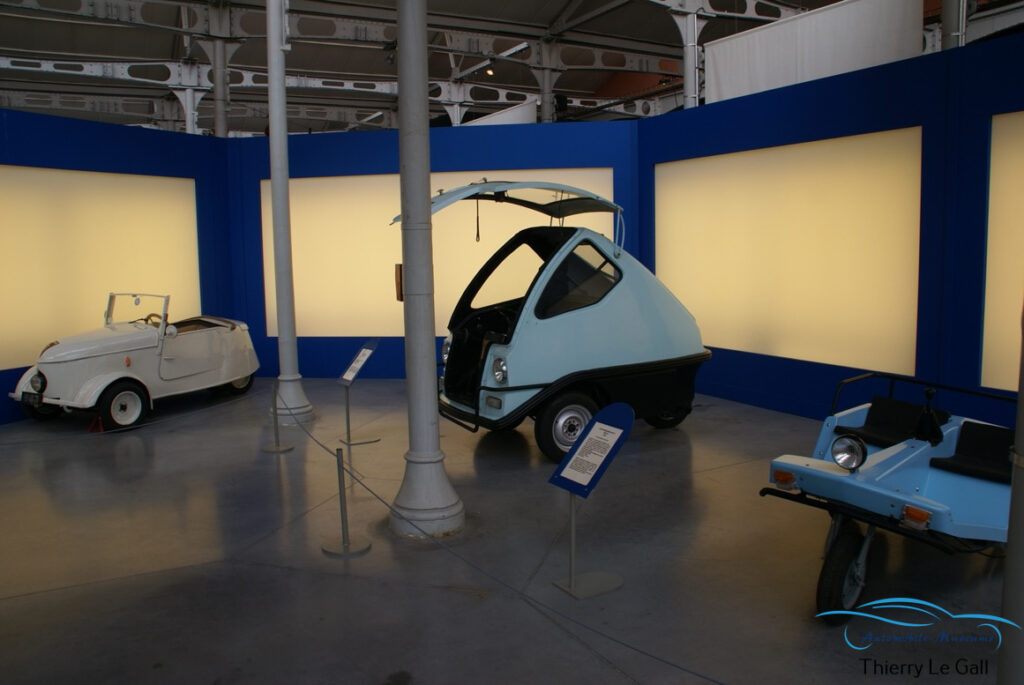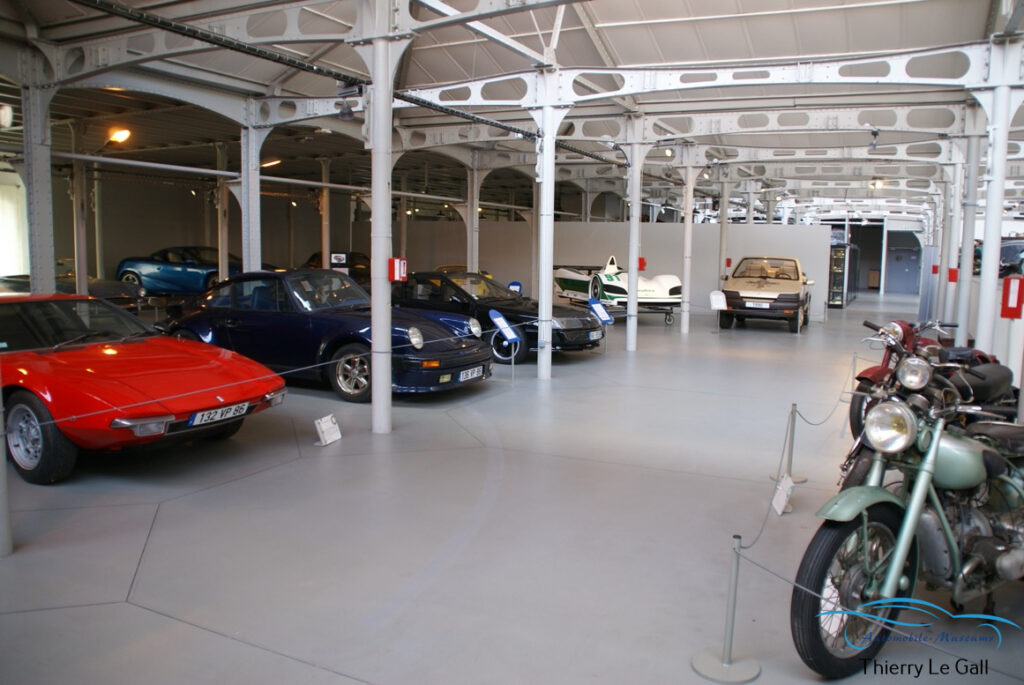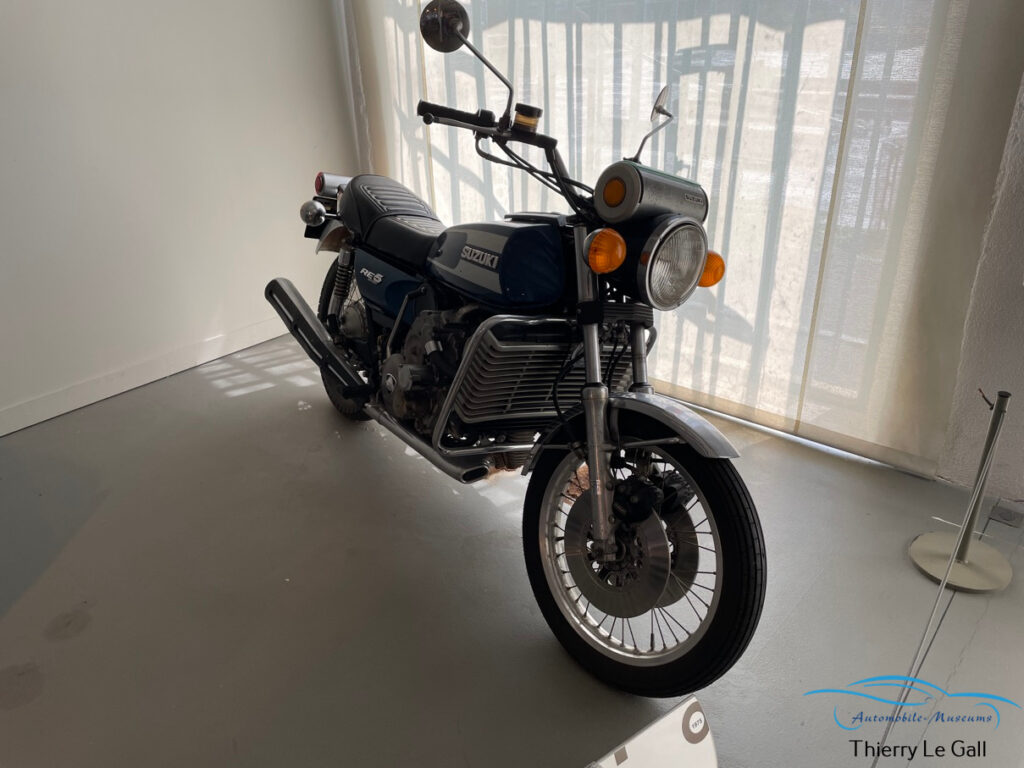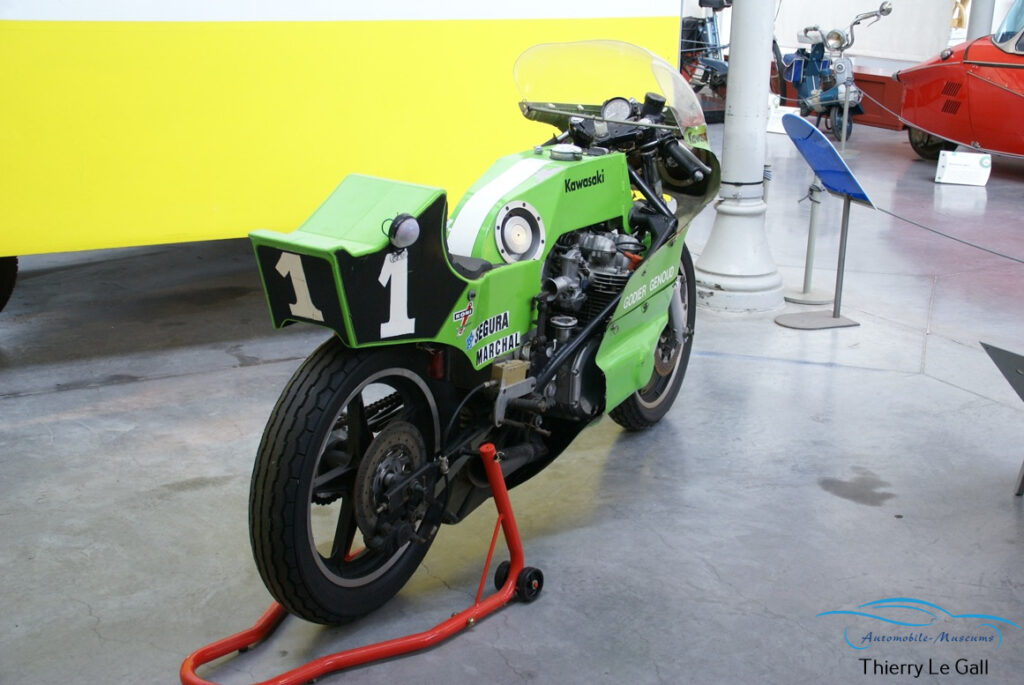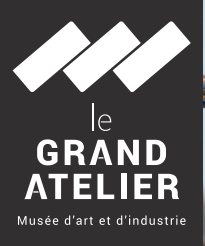
The Grand Atelier, Museum of Art and Industry, in its full name, is housed in a building built between 1886 and 1887, listed as a historical monument. It was a former workshop of the arms factory of Châtellerault. Created in 1969 by the famous collector Bernard de Lassée to house his collection, the museum and a large part of the collection were taken over by the city of Châtellerault in 1991. It became the Auto Moto Cycle Museum when it reopened to the public in 1998 after long works.


Finally in 2019, after several months of work and the installation of a new museography, The Grand Atelier, Museum of Art and Industry took its new name, bringing together on the same site other city’s collections which were previously on display at the Hôtel de Sully. The Grand Atelier is labeled “Musée de France”.



Cars
On the car side, the museum exhibits about fifty cars. The cars from the Bernard de Lassée collection were joined by donated or loaned cars, including some more recent sports cars. The oldest is an 1896 Delahaye who took part in the Paris-Marseille race that year. Without following a particular theme, the car collection is eclectic. You can discover pioneers (Clément Bayard, Darracq, Peugeot, etc.) or a rare Brouhot (a small regional manufacturer). Then the start of series production in the 1920s is illustrated by the Ford T and the Citroën B12 and B14.









At the same time, small manufacturers such as Darmont (Morgan 3-wheel licence), Amilcar (CGS derived from cyclecars) or Georges Irat (elegant roadsters) offered small sports cars. The illustrious Bugatti 35 (on loan from the National Automobile Museum) is the most successful car in the history of motorsport.







Luxury sedans such as a majestic Voisin C14 or a sportier Talbot M67 rub shoulders with more classic cars, Citroën Traction 15/6, Peugeot 402 or Rosengart.






Then there are the popular and post-war family cars, Citroën 2 CV, Peugeot 203, Renault 4CV or 4L, Simca 1000, as well as the roomier Simca Chambord or Ford Comète which, with their V8s, interpret the American style of the 1950s in proportions more suited to French roads.






Some cars are set in a reproduction of a garage and gas station that will bring back memories for many. Some models (Peugeot, Teilhol) show some attempts to use electric motors over time, always handicapped by the weight and short autonomy of the batteries, accompanied by a life-size reproduction of the Lunar Rover of the Apollo missions!






Among the cars that have joined the museum’s collection, a few small Italian and English convertibles (Fiat, MG, Sunbeam, Triumph, etc.) rub shoulders with more powerful Alpine, Porsche, Rolls-Royce and De Tomaso, as well as a Citroën M35, a small series with a rotary engine.








A series of unique Heuliez models were acquired by the museum after the coachbuilder filed for bankruptcy, a scale 1 model of a racing car similar to the Le Mans race car WM in style, and a concept of a 4-door convertible based on the Peugeot 407.



Besides cars
As the original name of the museum suggests, several 2-wheelers are on display. Some bicycles present the origins and evolution of this type of mobility. In the same way, the motorcycles on display illustrate the progress, from the first bicycles equipped with an engine and a small tank to the machines of the 1930s that are now real motorcycles.









Those who thought the scooters were all Italian and made by Vespa will discover several French models built during the 1950s. The collections also include a large number of miniatures and scale models, as well as many objects related to the themes of transport and travel.







The decoration is completed by large panels that retrace the history of mobility, as well as the historical context around the pieces presented. The Grand Atelier, Museum of Art and Industry also offers 2 other major spaces. One traces the history of the Manu, as the arms factory was called, with swords, guns and machine tools, but also other local industrial productions.




The other space is dedicated to the evocation of the Cabaret du Chat Noir the Black Cat cabaret), the famous Parisian cabaret created by Rodolphe Salis from Châtelleraud in Montmartre at the end of the nineteenth century. Workshops and temporary exhibitions complement the presentations and activities. Small shop and drinks vending machine available at the reception.




The Grand Atelier also plays an important educational role by welcoming many school groups from the region. Outside, you won’t miss the Manufacture’s 2 original chimneys, dating from 1885 and 1887, built in an elegant mix of red and black bricks. A metal staircase provides access to a platform squeezing the chimneys, which gives an overview of the site and beyond the town of Chatellerault.



Practical information
Museum Website (in French)
Opening
| From April 8th 1st to June 30th, Wednesday to Sunday | 2pm to 6pm |
| From July 1st to August 31st, Tuesday to Sunday | 2pm to 7pm |
| From September 1st to December 31st, Wednesday to Sunday | 2pm to 6pm |
| Closed every Monday and January 1st, May 1st and December 25th |
Rates
| Adults | 5,00 € |
| Young (- de 25 ans) | Free |
| Free Parking |
The photos on this page belong to Automobile-Museums, no use or reproduction is allowed without written permission from the owner.
Discover more automobile Museums around the world…


